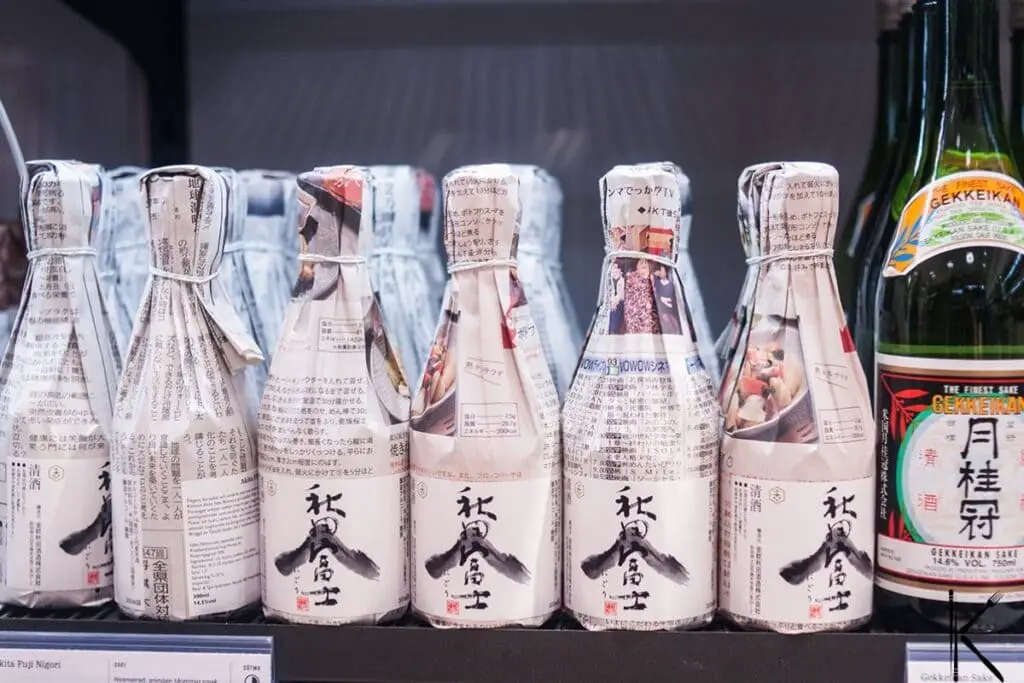Quick summary: Yes, Sake can go bad. While sake doesn’t spoil like regular foods, its quality deteriorates over time, prompting disposal.
You want to impress your friends with a sake drink you brought from Japan, but you’re not sure if the beverage is expired or not. In this article, we’ll bring you valuable advice.
You have brought original rice delicacies from your exciting trip to Japan, and it cannot pass without the famous sake. The chances are that the whole label is strained in Japanese, and you don’t even see a date that could be a guideline for durability anywhere. How then will you know if it is safe to drink sake?
To begin with, we will say that it is common to call sake Japanese rice wine. In many ways, sake is actually similar to wine, at least when it comes to storage. Taste has nothing to do with each other.
However, one big difference is that sake will not get better with age in any scenario. Here’s everything you need to know about this delicacy from the Land of the Rising Sun.
How Long Does Sake Last?
Sake is an alcoholic beverage that is very long-lasting and should not spoil, at least not rapidly. That is why there is often no expiration date on the bottle, and some regulations do not require it to be printed. However, there are some guidelines to preserve the best sake quality.
Unopened bottle of sake
A bottle of sake can stand at a comfortable temperature in the pantry for years. It has a long shelf life as long as it is unopened. However, keep in mind that value of sake degrades over time. So it will be best to consume the sake fresh, within two years of bottling. It can certainly stand for years to come, but the chances are high that the taste will change and weaken. This will not mean that the product is unsafe to drink, but you will not get the best out of it.
Opened sake
Unlike wine, once you open a bottle of sake, it would be best to drink it all in one day. We recommend, of course, with a lot of company, not alone. That way, the drink will taste the best. If you still have leftovers, be sure to store them in the refrigerator and consume sake within two to three weeks.
Unpasteurized sake
The above values do not apply to sake that is not pasteurized in production. You will recognize this by finding these products in the refrigerator in the store, while regular sake and other alcoholic beverages are on a standard shelf. If the product was standing in the fridge in the store, it means that you have to keep it like that at home as well, regardless of whether it is open or not. This kind of drink, while unopened, can last for about six months and after opening for a week or two.
Can Sake Go Bad?
It is unlikely that sake will spoil in the usual way like other foods. However, in time you will want to throw it away for quality reasons. But some indications can visibly show you that it’s time to say goodbye to this rice treat.
Here’s how to tell if sake is bad:
Sign 1: Visual changes
If you notice that turbidity has occurred or some other change in color and texture, like a sediment formation, the decay process has advanced. You probably don’t want to consume such a beverage.
Sign 2: Off smell
Any unusual sour odor will mean that the product is spoiled. This is likely to happen after opening the bottle and standing for a long time.
Sign 3: The taste does not seem right
If you notice any deviations in taste, it is recommended that you discard the product. You will not enjoy the quality of the drink anyway, so there is no point in keeping it. Alcohol can evaporate over time, and sake will become bland.
See more: What can I use instead of sake?
What Is The Best Way To Store Sake?
Just like wine, until the sake is opened, you can keep it in the pantry or somewhere else at a pleasant temperature and without light. This only does not apply to unpasteurized sake, which must stand in the refrigerator even before opening.
Here are some guidelines on how you can extend the quality after you open the bottle.
Tip 1: Choose a cool and dry place
Be sure not to expose sake to the sun or any heat sources. This will certainly promote spoilage, and the drink will not behave well when exposed to high temperatures. Choose a cozy pantry or hidden kitchen cabinet. Opt for a cool and dark place to get the best results.
Tip 2: Keep in the fridge after opening
After opening, the sake must stand in the refrigerator if you want the quality of the taste to last a few more weeks. It is recommended to use up the bottle as soon as possible.
Tip 3: Keep well sealed
Always close the bottle when not using sake. It will accelerate the oxidation process and the drink will fade in record time.
FAQs
How can you tell if sake is bad?
You can tell if sake is bad by its off or sour smell, unusual cloudiness, and a noticeable change in taste from its typical characteristics. If you observe any of these signs, the sake might have gone bad and is best avoided.
Is it okay to drink old sake?
Yes, it’s generally okay to drink old sake if it hasn’t gone bad, but if it shows any signs of spoilage, it’s better to avoid it.
Should you refrigerate sake?
Yes, sake is generally best stored in a cool and dark place, and while some types might benefit from refrigeration, it’s not a strict requirement for all sakes.
Conclusion
Sake is one of the most famous Japanese products, and you will hardly go to visit the Land of the Rising Sun without taking at least one souvenir bottle with you.
It is also called Japanese rice wine, and just like the shelf life of wine, it has a similar lifespan. We are talking about the usual consumer wine, not collectibles.
Sake can stand on a standard shelf in the pantry until opening. It is only important that the temperature is comfortable and that there are no heat sources. After opening it, be sure to move it to the refrigerator and consume it as soon as possible.
See more: Rice wine substitute









